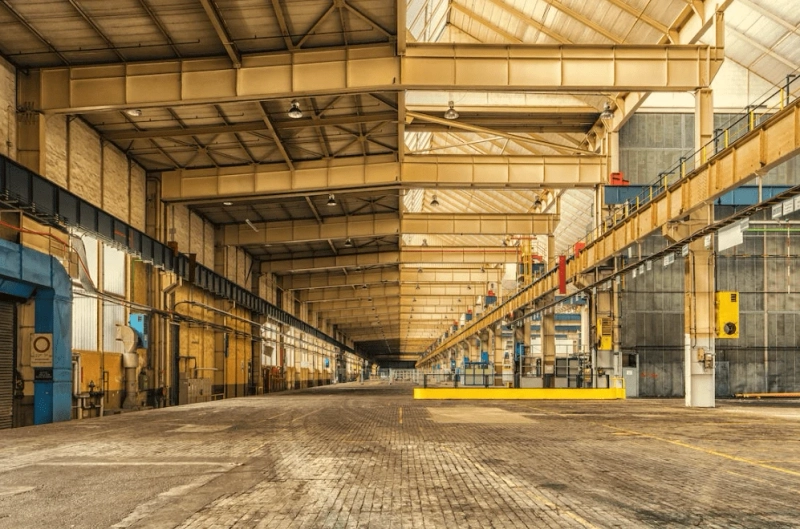Building a new warehouse is a significant project that involves numerous considerations, from the site's location to the construction's design and management.
Each decision you make can have a profound impact on the functionality, efficiency, and safety of your warehouse, ultimately affecting your business's profitability and competitiveness.
In this article, we'll explore ten essential considerations when building a new warehouse to ensure your project meets your business needs, budget, and timeline.
1. Define Your Business Needs
Before starting any construction project, it's vital to define your business needs clearly. This foundational step will guide your decisions and ensure that your new warehouse aligns with your operational requirements and strategic objectives.
Consider the nature of your goods, your inventory turnover, your growth projections, and your technology needs. What are your storage requirements? Do you need specialized areas for refrigeration, dangerous goods, or bulky items? What type of equipment will you use, and how much space will you need for maneuvering? By understanding your operational needs and future goals, you can design a warehouse that is functional, efficient, and scalable.
2. Choose the Right Location
The location of your warehouse significantly affects your logistics efficiency, operational costs, and accessibility to markets. Therefore, it's critical to choose your site wisely.
Consider factors such as proximity to major transport routes, accessibility for trucks, distance to customers and suppliers, local labor market, and regional regulations. Also, evaluate the site's physical attributes, such as size, shape, topography, and potential for future expansion.
3. Incorporating Environmental Considerations
One of the pivotal aspects often overlooked in warehouse building projects is the environmental consideration. It's essential not only to comply with environmental regulations but also to preserve the natural ecosystem surrounding your warehouse site. This is where a project ecologist can become a key player in your construction team.
A project ecologist can provide crucial insights into the local flora and fauna and suggest ways to mitigate potential harm caused by the construction and operation of your warehouse. Their expertise can guide you to adopt more sustainable construction methods, contribute to local biodiversity, and align your project with the principles of environmental stewardship.
For instance, the ecologist might recommend the use of permeable pavements to reduce runoff, the inclusion of native plants in your landscaping to support local wildlife, or the implementation of a bird and bat protection plan if your warehouse is located near their habitats.
By working with a project ecologist, you can build a warehouse that respects the natural environment, enhances your company's green credentials, and contributes to the broader goals of sustainable development.
4. Plan Your Layout and Flow
The layout of your warehouse can greatly impact productivity, safety, and space utilization. A well-designed warehouse minimizes travel distances, reduces congestion, and facilitates the smooth flow of goods from receiving to storage to dispatch.
Consider your inventory management strategy (such as FIFO or LIFO), the variety and size of your SKUs, and the required processes (like picking, packing, and quality control). Based on these factors, design the layout and flow that best supports your operations. For example, fast-moving items could be located near the dispatch area to speed up picking and reduce travel time.
5. Incorporate Technology
Modern warehouse operations rely heavily on technology for inventory management, order processing, and data analysis. Integrating technology into your warehouse design can improve accuracy, efficiency, and visibility across your supply chain.
Consider the type of Warehouse Management System (WMS) you will use and the equipment needed for its implementation. Also, think about technologies such as barcode scanners, RFID systems, automated guided vehicles (AGVs), and warehouse robots. Remember, your technology should be scalable to accommodate future growth and changes in your operations.
6. Optimize Storage and Space Utilization
Maximizing space utilization is key to increasing your storage capacity and reducing costs. However, optimizing storage is not just about cramming as much inventory as possible. It's about balancing the need for space with accessibility, safety, and the nature of your goods.
Consider the types of storage systems that best suit your products and operations. These could be pallet racking, shelving, mezzanines, or automated storage and retrieval systems (AS/RS). Also, consider the aisle widths required for your forklifts or other material handling equipment.
7. Prioritize Safety
Warehouse safety is paramount, not only for compliance with regulations but also for the well-being of your staff and the smooth running of your operations. A safe warehouse minimizes the risk of accidents, reduces downtime, and promotes a positive work environment.
In your warehouse design, consider aspects such as fire safety, ventilation, lighting, signage, pedestrian walkways, and ergonomics. Ensure that your layout allows for safe movement of people and equipment and that your storage systems are secure and suitable for your products.
8. Plan for Sustainability
Building a sustainable warehouse is not just good for the environment; it can also yield significant cost savings and enhance your company's reputation. Sustainability in warehouse design could involve energy-efficient lighting, solar power, rainwater harvesting, natural ventilation, and waste reduction strategies.
When planning your warehouse, consider the lifecycle costs of your building materials and systems, not just the upfront costs. An investment in green technology or design might have a higher initial cost but can pay off in the long run through lower energy bills, maintenance costs, and environmental impact.
9. Invest in Quality Equipment
Another crucial aspect to consider when building a new warehouse is investing in good quality equipment. High-quality equipment not only ensures efficiency but also contributes to safety and longevity, ultimately leading to cost savings in the long run.
Take, for instance, the humble warehouse trolley. While it might be tempting to cut costs by opting for a cheaper model, investing in heavy-duty trolleys can significantly enhance your operations. These robust trolleys are designed to handle large loads and withstand the rigors of a busy warehouse environment. They ensure smoother movement of goods, reduce the risk of accidents and damage, and last longer, providing better value for your investment.
Moreover, quality equipment like heavy-duty trolleys can also improve the working conditions for your staff. They can reduce physical strain, speed up processes, and contribute to a safer and more productive workplace.
The importance of investing in quality cannot be understated when it comes to warehouse equipment. Whether it's trolleys, forklifts, conveyor systems, or pallet racking, always opt for reliability and durability over short-term savings.
10. Work with Professionals
Building a warehouse is a complex task that requires specialized knowledge and skills. Working with professionals can help you navigate the process, avoid costly mistakes, and achieve a result that meets your business needs and industry standards.
Consider engaging a team of experienced professionals, including a project manager, architect, engineer, and construction contractor. Look for professionals who have experience in warehouse design and construction and who understand your industry's unique requirements.
In conclusion, building a new warehouse is a strategic investment that can enhance your business's efficiency, competitiveness, and growth. By considering your business needs, location, layout and flow, technology, storage, safety, sustainability, and professional help, you can ensure your warehouse project is successful and future-proof. Remember, each warehouse is unique, and the best solutions are those that are tailored to your specific needs and goals.


